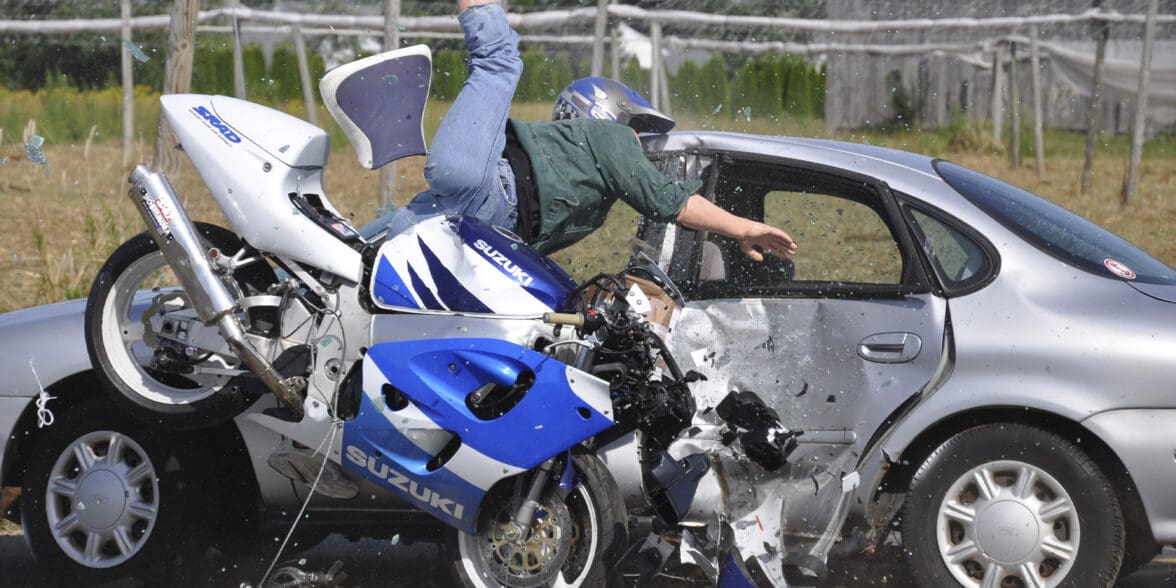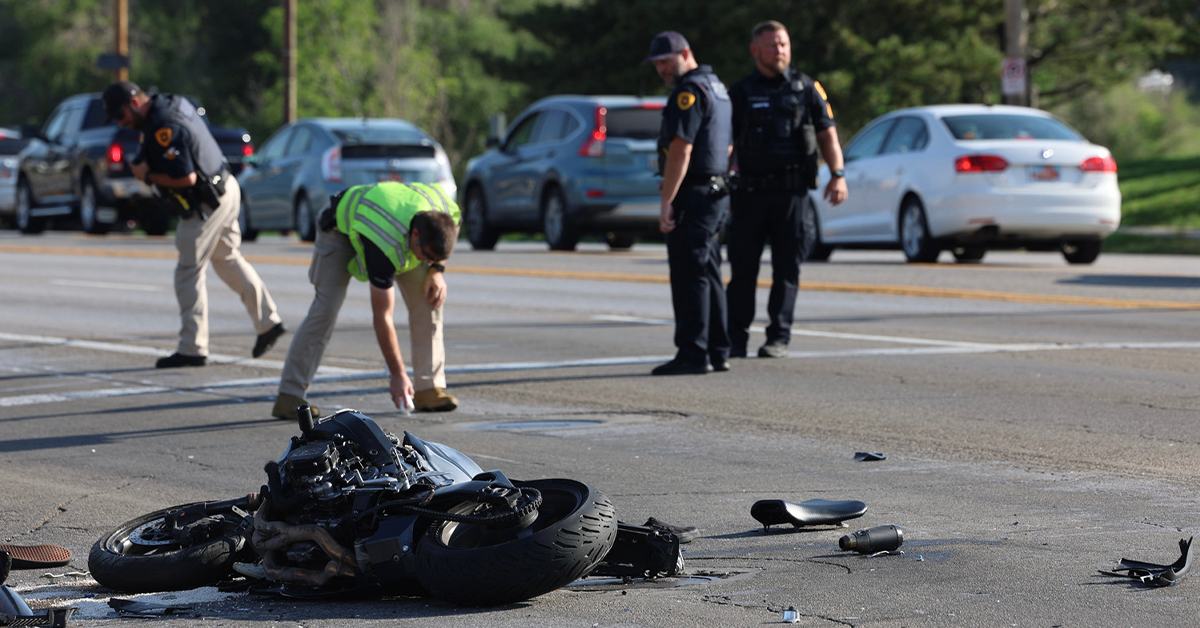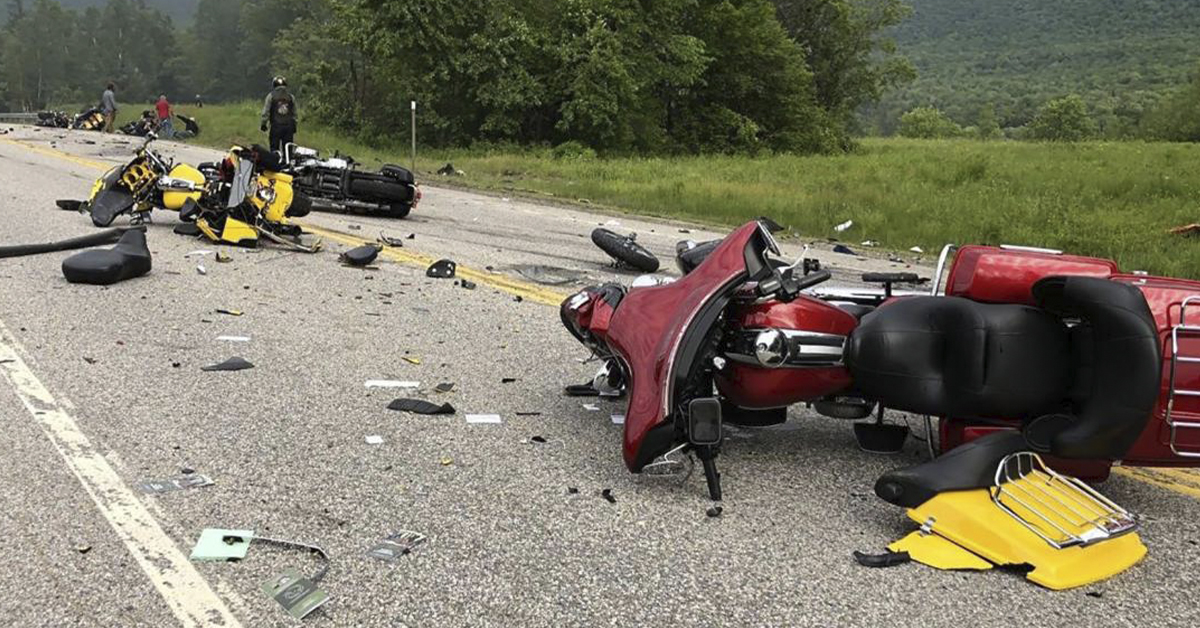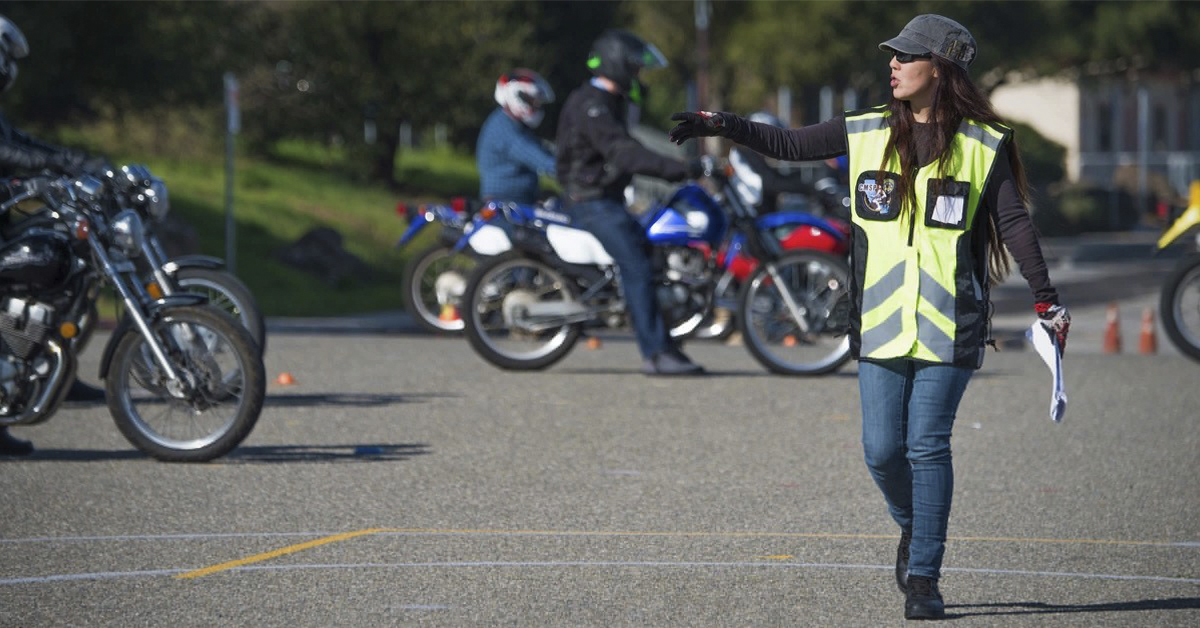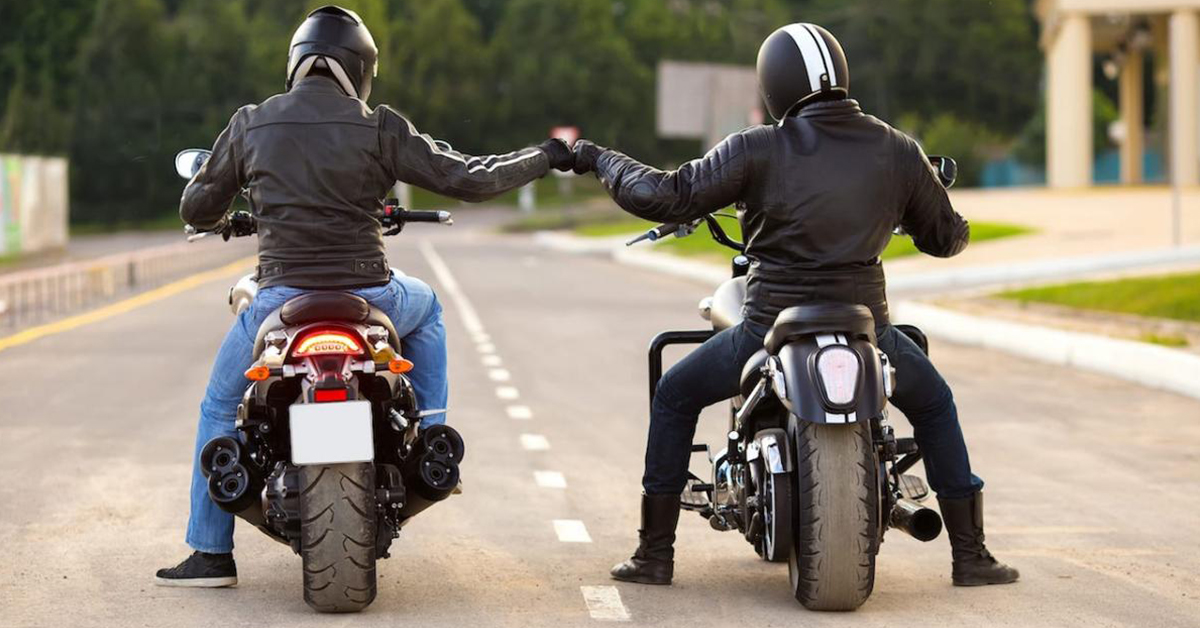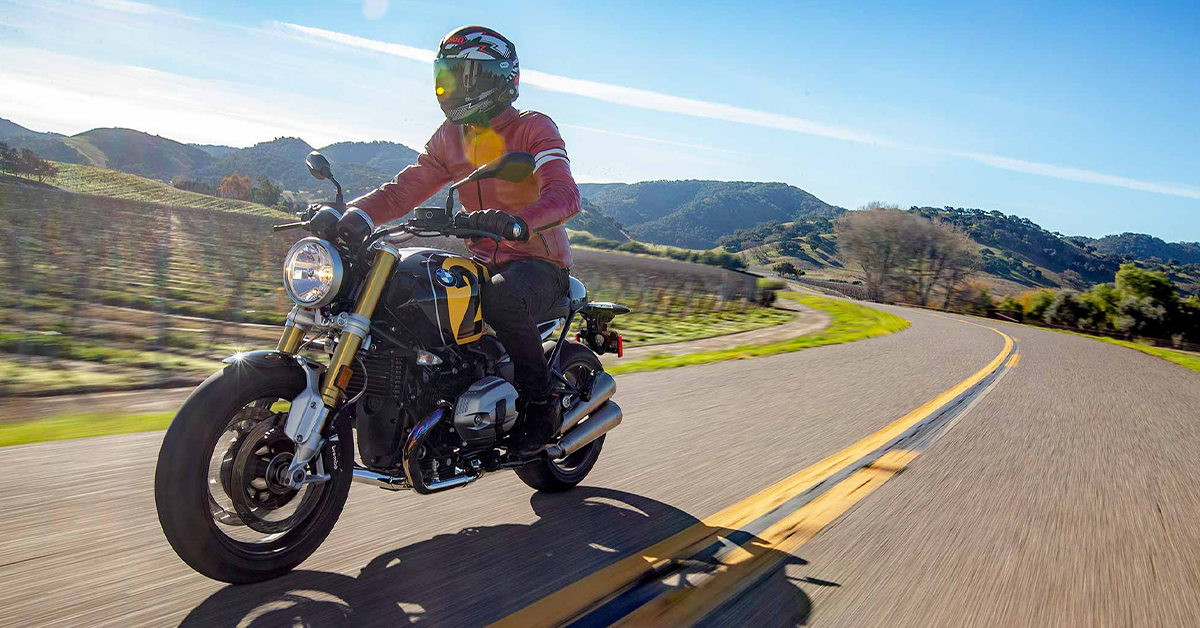Aside from the joy of riding in the open air, motorcycles offer other benefits, such as being affordable, faster, and more efficient means of transport than four-wheeled vehicles.
However, the lack of structure and stability makes motorcycles, by their nature, more dangerous than driving a car. Still, with the benefits offered, it’s not rare that many choose to ride motorcycles despite the risks.
So if you’re serious about riding a motorcycle either as transport or recreational, you must also get serious about safety. This includes learning to be a skilled and safe motorcyclist, investing in high-quality protective gear from trusted brands, and wearing a helmet. For example, wearing a helmet reduces the chance of head trauma.
The idea is to decrease the risks of a severe injury with the proper gear and understand the risks of riding a motorcycle and how to minimize them and their potential consequences.
Via KSL
Most Common Types Of Motorcycle Accidents
Left-Turn Motorcycle Crash
One of the most dangerous situations for motorcyclists occurs when cars make left turns. These collisions account for 42% of all motorcycle and car accidents. Typically, the turning car hits the motorcycle when the motorcycle is:
- Going through an intersection
- Passing the car
- Attempting to overtake the car
These accidents are not exclusive to motorcycles; they’re also common between two cars. Still, the motorcycle’s smaller size makes it even less visible to the turning vehicle. As a result, motorcycles passing cars within the same lane are even more vulnerable – cars do not expect this. They are often surprised by such maneuvers by motorcyclists.
Typically, a vehicle that hits another vehicle while making a left turn will be at fault for the accident. However, suppose the motorcyclist was speeding or was in the wrong lane. In that case, the motorcyclist may be partially at fault for the accident.
In most states, the motorcyclist will receive less compensation from the car driver for injuries and damages caused during an accident. In some states, motorcyclists’ behavior could block settlement altogether.
Lane-switching accident
This is a common motorcycle accident scenario. It happens when a car begins to merge over into your lane while they’re right next to you.
Typically, you will be riding on a four-lane road next to a vehicle that is not paying enough attention or cannot see you. A motorcycle can be easily obstructed in a car’s blind spots, masked by external objects, or difficult to spot as light or weather conditions change.
The collision is almost inevitable if a motorist can’t recognize or see the cyclist approaching.
Head-on crash
Accidents involving motorcycles and other vehicles account for 56% of motorcycle accident deaths. In most of these accidents, the car hits the motorbike from the front–78% of the time. (The car hits the motorcycle from the rear only 5% of the time.)
Head-on collisions between a car and a motorcycle are often fatal for the motorcyclist.
Lane splitting accident
“Lane splitting” refers to riding a motorcycle between lanes of slow or stopped traffic moving in the same direction. The practice of lane splitting is a common cause of motorcycle accidents because of several factors:
- The proximity of vehicles to the motorcycle
- The reduced space that the bike has to maneuver
- That cars do not expect that any vehicle or motorcycle will pass them in slowed-down or stopped traffic
If an accident occurs while a motorcycle lane splits, whether the motorcycle or car is at fault depends on whether lane splitting is allowed in that state. In addition, the opinions of the police officer and the judge on lane splitting and the actions of the car driver and motorcyclist before the accident also play a role.
Via CNN
Speeding and motorcyclist intoxication
About half of motorcycle accidents result from speeding or alcohol use. This statistic is not surprising; these factors play an essential role in accidents between cars and other vehicles. However, because motorcycles do not provide much protection for their riders, accidents involving speed or alcohol are much more likely to result in death or severe injury.
Corner turning accident
According to Survive The Ride, 80% of single-vehicle motorcycle crashes happen on corners – which means the motorcyclist is to blame for making a mistake.
One of the best ways to avoid this type of motorcycle accident is by traveling at a speed that will give you time to react when you see a tight corner or a hazard.
“Slow In, Fast Out” is a practical rule of thumb. This means entering a corner wide and slowly to increase your field of vision. Then, once you are sure you can handle the turn and there are no hazards, you can speed up and out of the corner.
Paying attention to road signs that show turns or up-ahead hazards can significantly help. Also, be aware that debris builds up in certain areas of the roadway.
What Happens If / When A Passenger Is Injured In An Accident?
Unfortunately, the rights of an injured passenger are less straightforward, especially if you need to prove negligence or liability from the other driver.
Still, a motorcycle passenger that has been involved in an accident may seek compensation for the damages they suffered because of the accident.
By filing a motorcycle accident injury claim, a prosecutor can hold the parties responsible for the accident accountable. These liable parties could be other drivers, including the driver of the motorcycle, a manufacturer of a defective part that could have led to the accident, or even the mechanic or shop that provided maintenance to the motorbike.
Common Motorcycle Passenger Injuries
- Traumatic Brain Injuries
- Spinal Cord Injuries
- Road Rash
- Fractured Bones
- Biker’s Arm
- Lacerations
Via California Highway Patrol
The Importance Of Being Vigilant
According to the National Highway Traffic Safety Administration (NHTSA), Motorcyclists continue to lead to traffic-related fatalities. In 2020, motorcyclists were about 28 times more likely than people in passenger cars to die in a traffic crash per vehicle miles traveled.
For this reason, it becomes essential to be constantly vigilant by using your mirrors, checking over your shoulders before changing position or turning and looking into the far, middle, and near distance.
For instance, by riding a motorcycle defensively, a motorcyclist is constantly vigilant in evaluating the actions and movement of every vehicle nearby and assesses the intent of other drivers to plan their position to be in the safest possible area, concerning the traffic, at all times.
Suppose no vehicles are within striking distance of the motorbike. In that case, safety relies solely on the rider’s ability to operate and control the machine.
How Can Riders Protect Themselves?
The lack of a protective shell combined with high speed means that motorbikes will always be a potentially vulnerable mode of transport.
However, you can significantly reduce your risk by taking simple precautions. These include professional training, good riding habits, high-quality protective equipment, and maintaining your motorcycle correctly.
The goal is to protect you, your passenger, and other road users and to make biking fun, enjoyable, and safe.
Via Akin Moto
Ride S.M.A.R.T.
Whether a novice or experienced rider, making the right choices when riding and choosing protective equipment and accessories should be your priority. In a crash, wearing the proper gear could be the difference between life and death.
Ride S.M.A.R.T. is a hands-on survival guide for the average motorcyclist. It stands for:
Sober: Never drink and ride, as 39% of motorcyclists’ deaths had a B.A.C. of .01 or above.
M Class: Unfortunately, at least 20 percent of all motorcyclists on the road lack the proper classification that legally accredits them with the skills necessary to operate the motorcycle safely.
All The Gear All The Time (A.T.G.A.T.T.): This is pretty self-explanatory. Protective gear should include:
Via Visor Down
Helmets: A bright, reflective DOT-approved helmet could be a lifesaver. Unfortunately, most of those killed in motorcycle crashes were not wearing a helmet. A helmet will not only protect against head injuries but also makes riders more visible to other drivers.
Eye Protection: Wearing eye protection is legally required to protect the rider from eye irritation or injury from dust and other hazards.
Gloves: Riders must wear full-fingered gloves to protect their hands from injury and weather.
Jackets, Pants, and Boots: These three things must be in every rider’s outfit. Additionally, high-quality protective gear can save you from skin loss, road rash, and foot or toe mutilation in a crash.
Rider Training: Improve your riding skills and take a refresher training course every few years, as skills can diminish with age.
T-CLOCS: This is a pre-ride inspection checklist acronym that comprises tires/wheels, controls, lights/electrical, oil/fluids, chassis, and stands.
Checking your motorcycle regularly for the proper operation could mean having a safe, enjoyable ride every time.
Via Cycle World
Although motorcycles are inherently more dangerous than wheeled vehicles, we can still make biking an enjoyable and safe activity.
To achieve this, you must respect traffic laws and be diligent. Start by becoming a safe and skilled rider, get the proper protection, and keep your motorcycles in the best shape possible.
We hope this article is a helpful starting point to help you and other drivers remain safe on the road.


